Ditula angustiorana
(Haworth, [1811])
-
 Subfamily: Tortricinae, Ramapesiini
Subfamily: Tortricinae, Ramapesiini -
 Wingspan: 12-18 mm
Wingspan: 12-18 mm -
 Flight period: May - Aug (Oct)
Flight period: May - Aug (Oct) -
 Spread: Common
Spread: Common -
 Host plants: Polyphagous
Host plants: Polyphagous
Information
The Ditula angustiorana is a moth of the Tortricidae family, subfamily Tortricinae,
with wingspan of about 12-18 mm.
In Europe we find it in the Iberian Peninsula, in the United Kingdom, in Ireland, in the Benelux, in Denmark, in Sweden and in Poland. *
In Italy it is also present in Sardinia. *
The front wings of the Ditula angustiorana are rust / ocher in color. In the male base and costal fold are dark brown.
There is a ferruginous-brown oblique mark from the back near the base.
The central band and the rib patch are of an intense rusty orange color, often separated by a whitish suffusion on the coast, and the patch extends like a band at the tornus. **, ****
The hind wings are gray-black, in the female lighter in front. ****
Sexual dimorphism is represented by the absence, in the female, of the large ocher spot in the median area. **
Univoltine species, adults are visible from May to August depending on the latitude, occasionally a second generation has been found in September, October.
The eggs are deposited in plaques on the leaves mainly in June and July. ***
The larvae are found from August to April and May and are polyphagous, they feed on the foliage of the trees, generally between spun leaves and
fruiting shoots developing; sometimes causing superficial damage to ripe fruit. ***
In late autumn, the larvae create a hibernacle attached to a bud or spur and resume feeding on developing buds, flowers and fruit in the spring. ***
The eggs are whitish / light yellow, flat and irregular in shape. **, ***
The larva of the Ditula angustiorana is yellowish green, with a darker ocher to brown / black head and prothoracic shield. **
The chrysalis is light brown with darker shades. **
Polyphagous species is found on many plants: Aquifoliaceae, Ilex aquifolium (holly) Araliaceae, Hedera helix (common ivy), Cupressaceae, Juniperus communis (Juniper), Ericaceae, Rhododendron (azalea sp.),
Pinaceae, Larix (Larch) and Pinus sylvestris, Rosaceae, Malus (apple tree) and Prunus, Santalaceae Viscum album (Mistletoe), Taxaceae, Taxus baccata, Vitaceae Vitis vinifera (Common vine) and others.
* Lepidoptera mundi https://lepidoptera.eu/ - Fauna Europea https://fauna-eu.org/
** Bestimmungshilfe für die in Europa nachgewiesenen Schmetterlingsarten - http://lepiforum.de/
*** Bradley, JD; Tremewan, WG; Smith, Arthur(1973). Falene Tortricoidi britanniche . Cochylidae e Tortricidae: Tortricinae.pp. 140-1. ISBN 0 903874 01 6.
**** Meyrick, E., 1895 A Handbook of British Lepidoptera MacMillan,



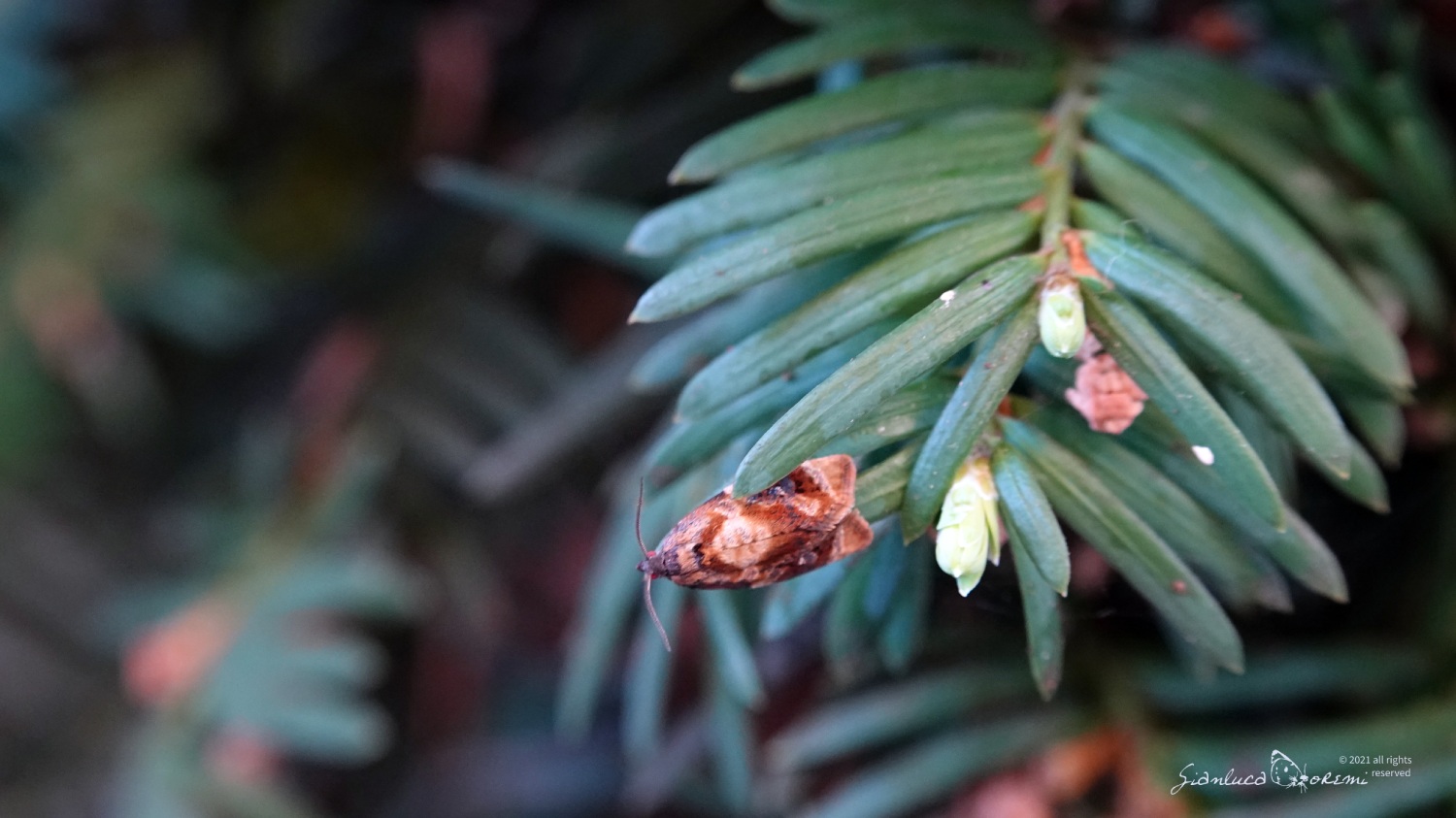
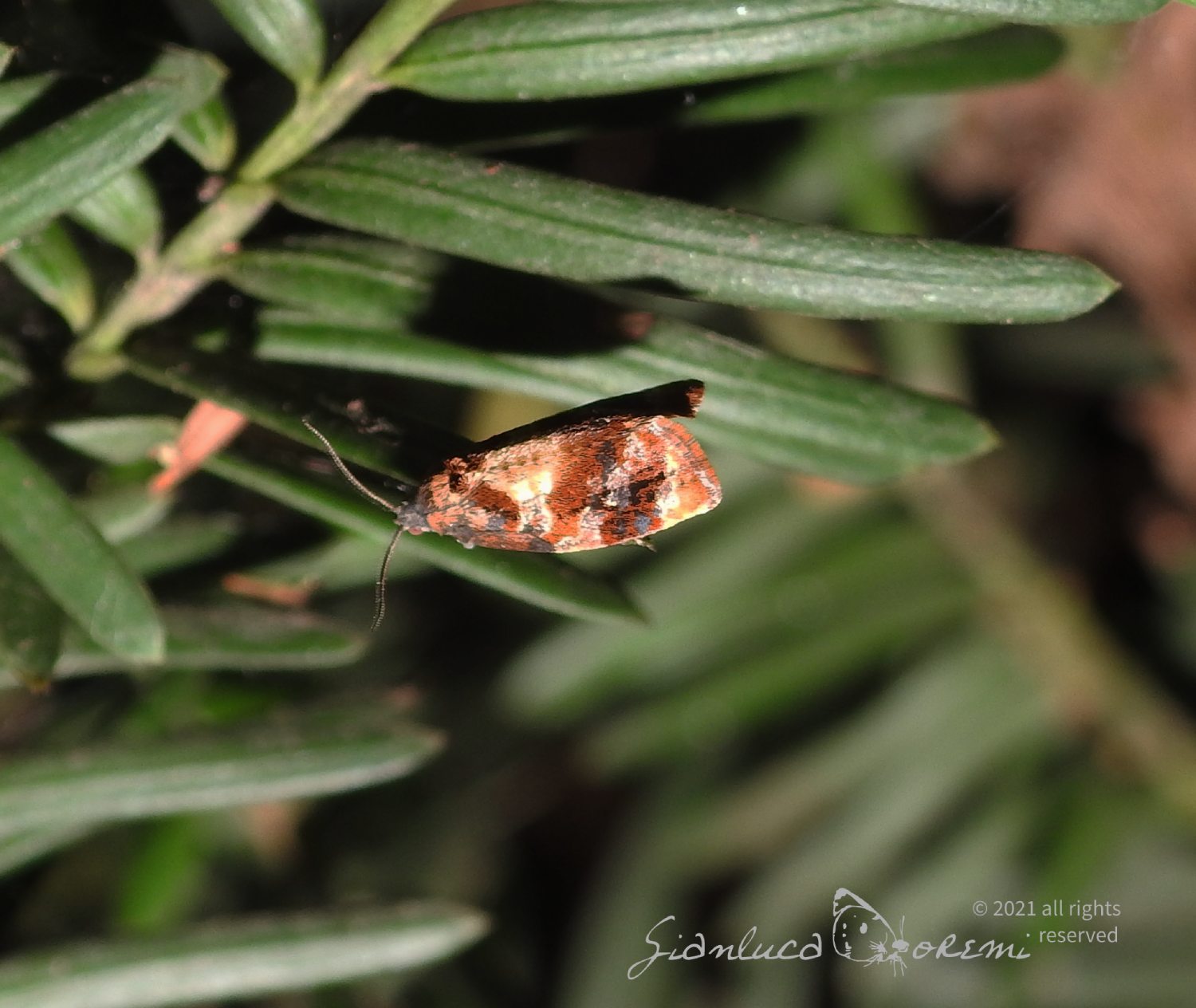
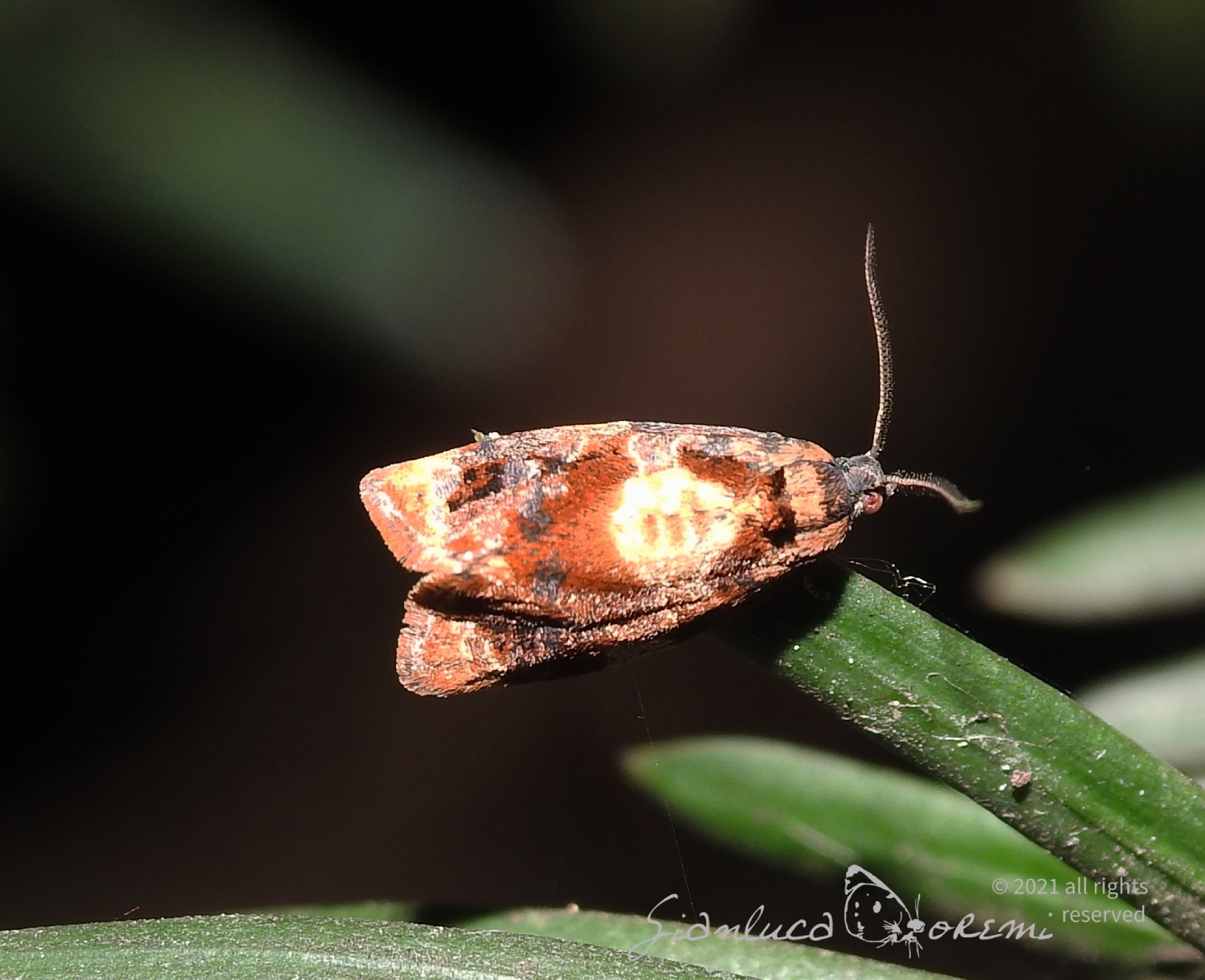
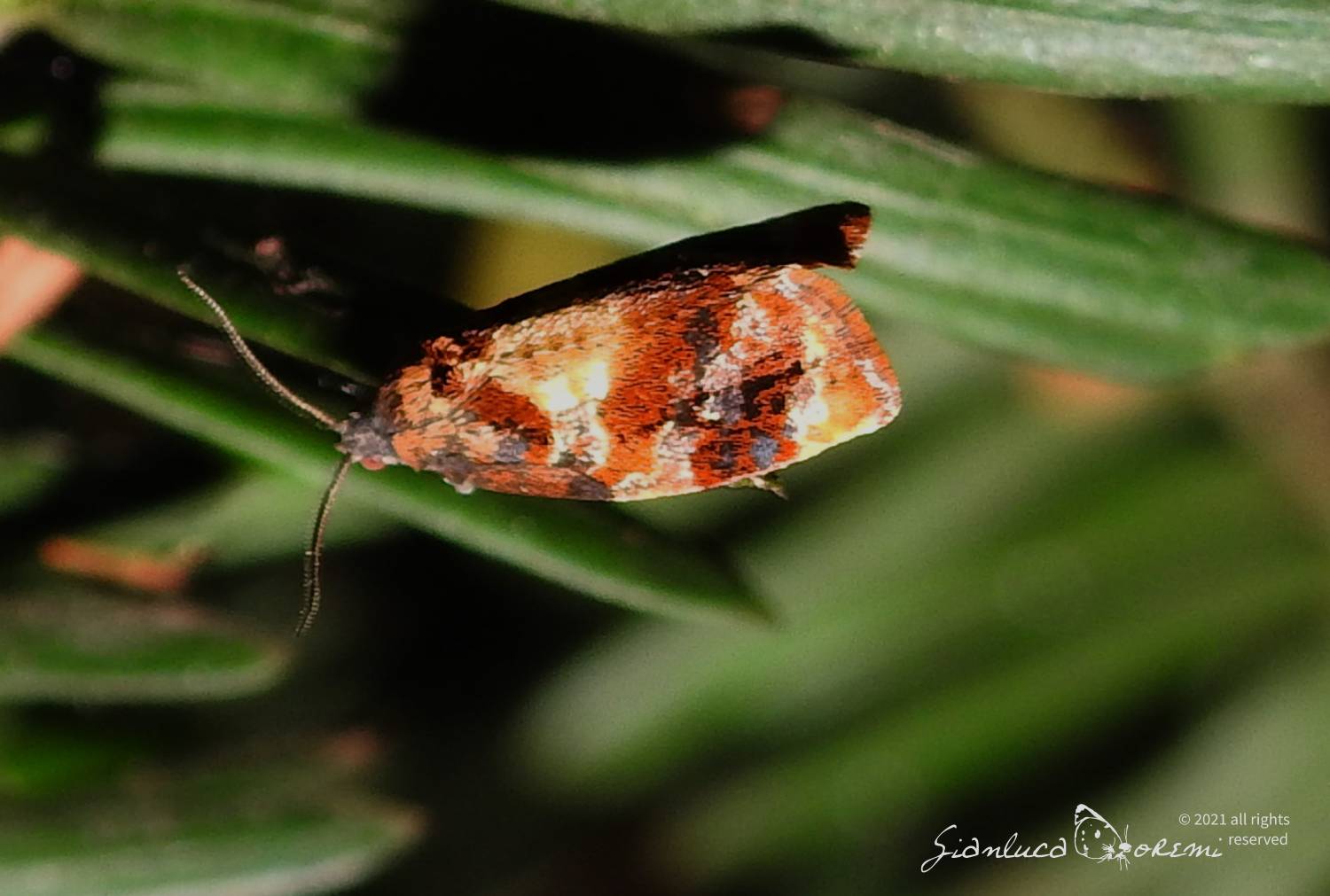
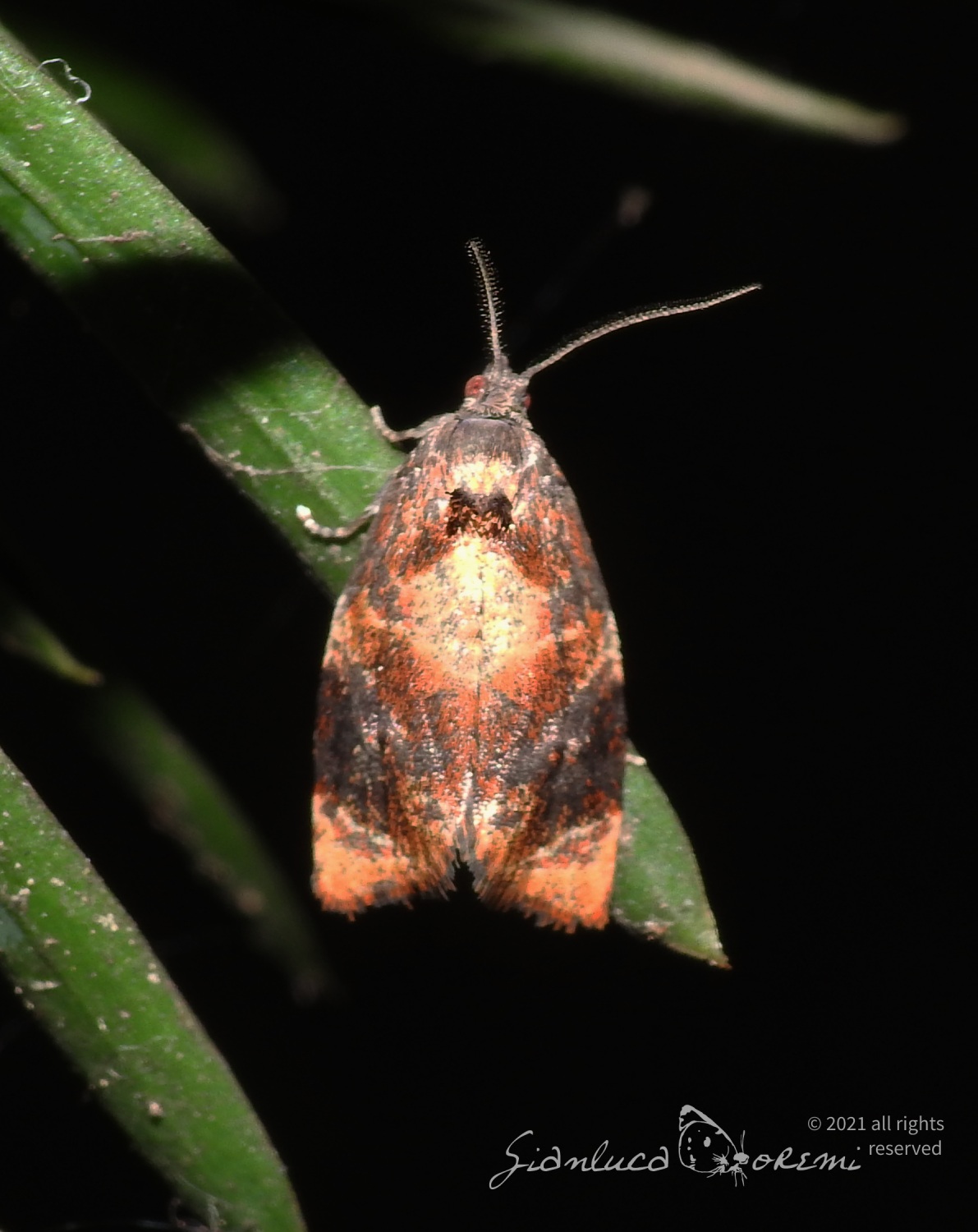

 EN
EN ITA
ITA
Social and publications